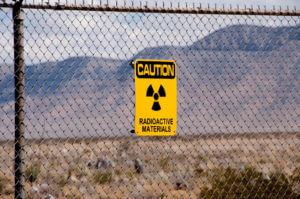
Throughout history, many events and experiments have been conducted for scientific and military reasons. One important time was during the Cold War when countries tested nuclear bombs in the atmosphere to build stronger weapons. This process was called atmospheric nuclear testing.
A lot has been said about how these tests affected the environment and relations between countries. However, not much attention has been given to the veterans who were directly involved.
These brave men risked their lives without knowing the dangers, and now they might be facing health issues because of radiation exposure.
Let’s look into the history of atmospheric nuclear testing and discuss how you can find out if you or someone you know was part of these tests.
What Were Atmospheric Nuclear Tests?
Atmospheric nuclear tests were experiments where scientists set off nuclear bombs in the open air to see what would happen. Unlike the ones done underground, these tests were done out in the open, which spread a lot of radiation.
The main reasons for these tests were to see how the bombs worked and what effects they had on the environment and people’s health. They were carried out in places like the Nevada Test Site and the Pacific Proving Grounds.
There were a lot of these tests, with over 200 done by the United States alone. It is important to know about these tests to understand how they might have affected veterans.
Who are the Atomic Veterans?
Atomic veterans are people who took part in or were affected by nuclear tests in the atmosphere. This includes soldiers, civilian workers, and others at the test sites.
They could have been directly involved in the tests or helped with support and logistics.
Exposure to Radiation
Being exposed to radiation can be harmful to your health. Radiation from atmospheric nuclear tests can damage your body’s cells and increase the risk of getting cancer, heart disease, and other long-term health issues. How bad it is depends on how much radiation you were exposed to and for how long.
It can be hard to know if you have been exposed. Many veterans did not know right away and might show signs years later.
Identifying Exposure to Radiation
Figuring out if you were exposed to radiation during atmospheric nuclear testing can be tough, but there are steps you can take to find out more and stay healthy.
Checking Military Records
Start by looking at military records. These documents might mention if someone took part in nuclear tests or was stationed at test sites.
Finding these details can help you understand if there was any radiation exposure.
Looking for Specific Operations
Certain operations like Operation Crossroads or Operation Castle were well-known for involving nuclear tests. Being part of these operations might mean exposure.
Asking for Personal Stories
Talking to veterans who were there during the same time can be really helpful. Their stories can confirm if someone was actually present during nuclear testing.
This is useful if the official records are missing some information.
Using Government Help
The U.S. government has resources for what is known as “atomic veterans.” Agencies like the Department of Veterans Affairs (VA) can assist in accessing official records and figuring out the level of exposure. They offer support and guidance to help veterans with this process.
Initiatives for Recognition and Support
There are several programs from the government to help atomic veterans—people who were exposed to radiation from nuclear testing. One important program is the Radiation Exposure Compensation Act, or RECA for short.
RECA is designed to provide money and health benefits to those affected by nuclear tests that were conducted in the atmosphere. The program recognizes that being exposed to radiation can lead to health problems.
So, it offers compensation to people who have developed certain illnesses because of this exposure. This includes various types of cancers and other long-lasting health issues.
Veterans and their families can apply to get this compensation, but they have to meet certain conditions to be eligible. This means they need to prove that they were affected by the radiation from nuclear tests.
To get compensation, veterans must have been at specific test sites during certain times. For example, those who were at the Nevada Test Site from 1951 to 1958 or at the Pacific Proving Grounds from 1946 to 1962 might qualify. It’s important to check the exact places and times to see if they are eligible.
How to File a Claim with the VA
Filing a claim with the VA can seem daunting, but it is an important step in receiving benefits:
- Gather Necessary Documents: Collect your military records, medical reports, and any evidence of exposure.
- Submit Your Claim: This can be done online through the VA website or with the help of a VA representative.
- Follow-up: The process may take time, so regular follow-ups can ensure your claim is being processed.
Get Help with Your Claims
If you or someone you know has been affected by atmospheric nuclear testing, it is crucial to take the next steps in seeking support and advocating for justice. At the Cancer Benefits Center for Downwinders®, we can be an invaluable resource for atomic veterans and their families.
Our mission is to help those exposed to radiation from nuclear testing receive the compensation and healthcare they deserve. We provide personalized support and guidance in filing VA claims, connecting with support groups, and accessing available benefits.
For more information about atmospheric nuclear testing and how we can assist you, contact us by filling out our registration form today. We look forward to serving you!
